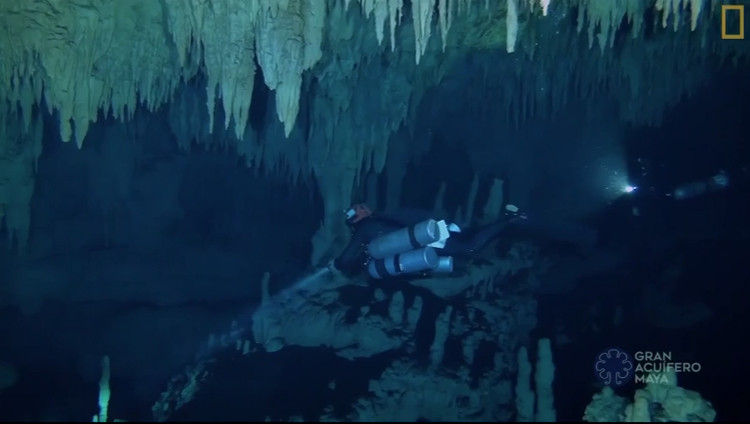Discover the largest underwater cave on the planet
A group of researchers discovered with a total length of 357km in the state of Quintana Roo, Mexico.
Archaeologists find the largest underwater cave in the waters off the southeastern Yucatan Peninsula of Mexico, the International Business Times reported on January 17. Filled with ancient artifacts, this extensive network of underwater tunnels can help researchers discover more about Maya culture.
Inside the world's largest underwater cave in Mexico.(Video: National Geographic).
The submerged 10,000-year-old cave actually connects the two largest networks of flooding tunnels on Earth, Sac Actun and Dos Ojos in Tulum, Quintana Roo, making it the largest cave ever found. The current combined cave is called the Sac Actu n system .
The new discovery is the result of more than 10 months of underwater exploration by the research team from the Mexican National Anthropological and History Institute (INAH) and the Great Maya Aquifer Project (GAM) . "This is a 20-year effort, going hundreds of kilometers of flooded caves in Quintana Roo, in which I spent 14 years exploring this massive Sac Actun system. Now everyone's job is to preserve it." , Robert Schmittner, a German researcher leading the GAM expedition team, said.
"We actually went a few times a day. On two occasions, we were only a meter away from the line between the two systems. It was like tracing the blood vessels in the body. It was a maze of ways. We sometimes have to be very careful , " Schmittner said.

An explorer dives in the cave.(Snapshot from video).
The vast limestone cave network contains artifacts preserved almost as perfectly as the Mayan porcelain flower vases. Treasures of ancient flora and fauna including human skulls as well as giant lazy skeletons, tigers and excellent plants are also kept in the cave.
"This immense cave can be seen as the most important archaeological site in the world, because it involves over 100 archaeological contexts, including evidence of the first settlers in the Americas, as well. like Maya civilization , " said Guillermo de Anda, INAH researcher and project director of GAM.
The team also found an 18km-long independent tunnel to the north of the Sac Actun system and named it "The mother of all collapsed pits". They are planning to analyze water quality and understand the biodiversity of the cave system.
- The mysterious 'Mayan world' inside the world's largest underground cave
- World's largest tube cave in Mexico
- 8 interesting facts about Son Doong cave
- Discover rare fossils of the Ice Age bear and wolf-like predator
- The largest ice cave in China does not melt in summer
- Discover the most beautiful volcanic cave in Southeast Asia
- The cave is larger than Son Doong
- Build the world's largest underwater park in Dubai
- Mexico: Research the world's longest underwater cave
- Discover the largest planet outside the Solar System
- Explore the world's largest cave in Vietnam
- Set of photos inside Son Doong - the largest cave in the world
 Is the magnetic North Pole shift dangerous to humanity?
Is the magnetic North Pole shift dangerous to humanity? Washington legalizes the recycling of human bodies into fertilizer
Washington legalizes the recycling of human bodies into fertilizer Lightning stone - the mysterious guest
Lightning stone - the mysterious guest Stunned by the mysterious sunset, strange appearance
Stunned by the mysterious sunset, strange appearance